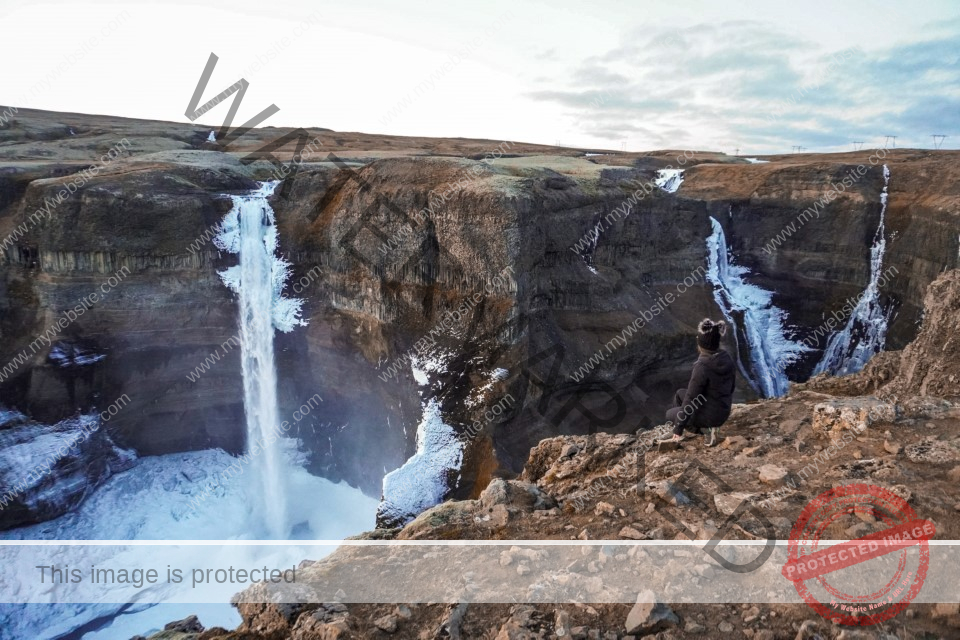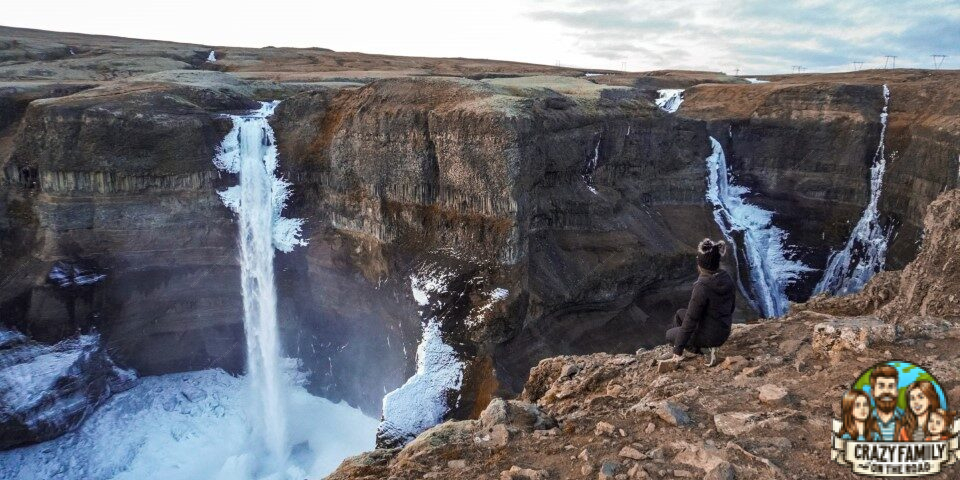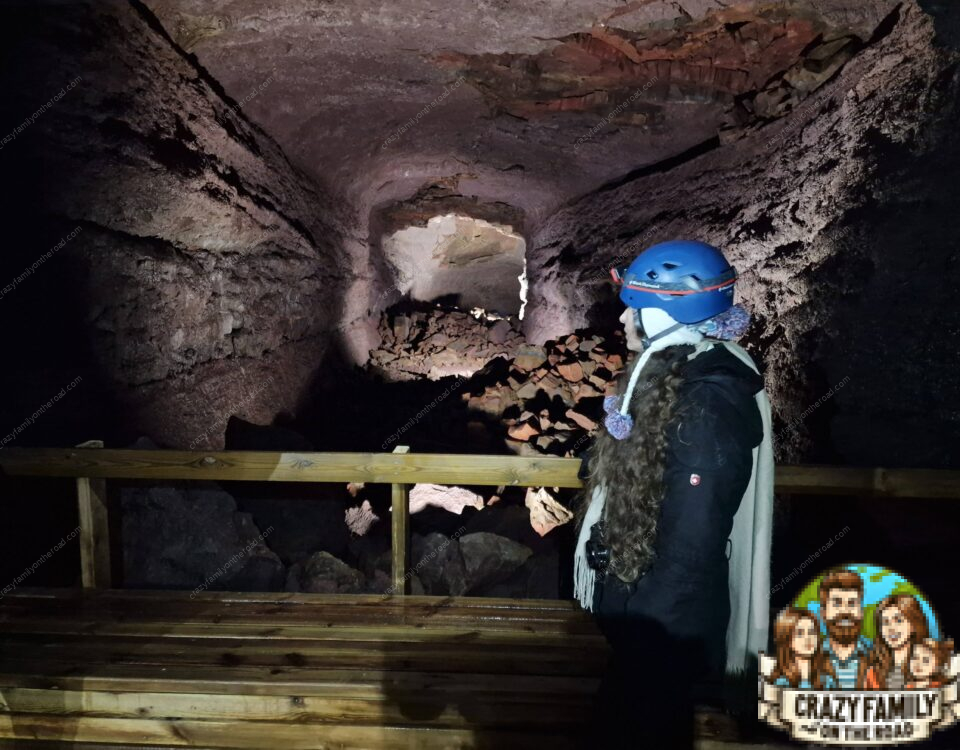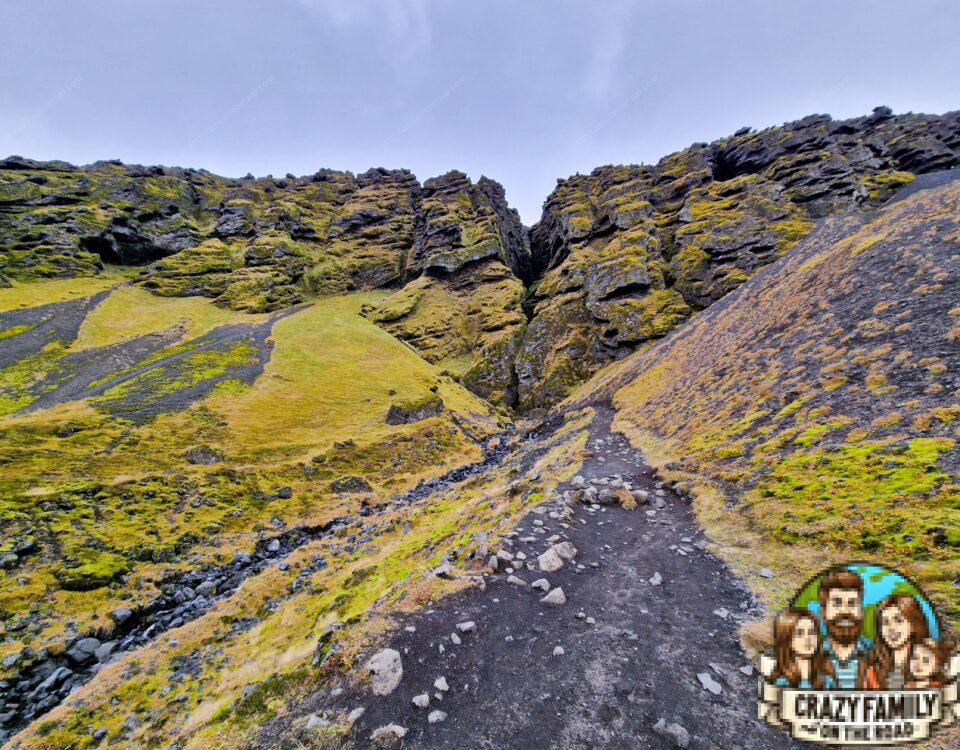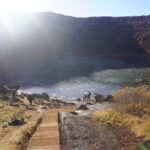
Kerid Crater
28. October 2024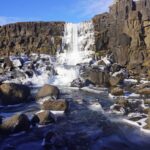
Golden Circle
29. October 2024Haifoss Waterfall and its wild beauty
Haifoss Waterfall is one of the highest waterfalls in Iceland. It has a staggering height of around 122 metres and is one of the jewels of the Icelandic interior. Thanks to its remote location, significantly fewer tourists head here so that you can enjoy this beauty almost alone.
Although it is not close to the main route, you should definitely not miss it during your visit to the island. In fact, it is beautiful in all seasons and is definitely one of the most beautiful waterfalls on the whole island.
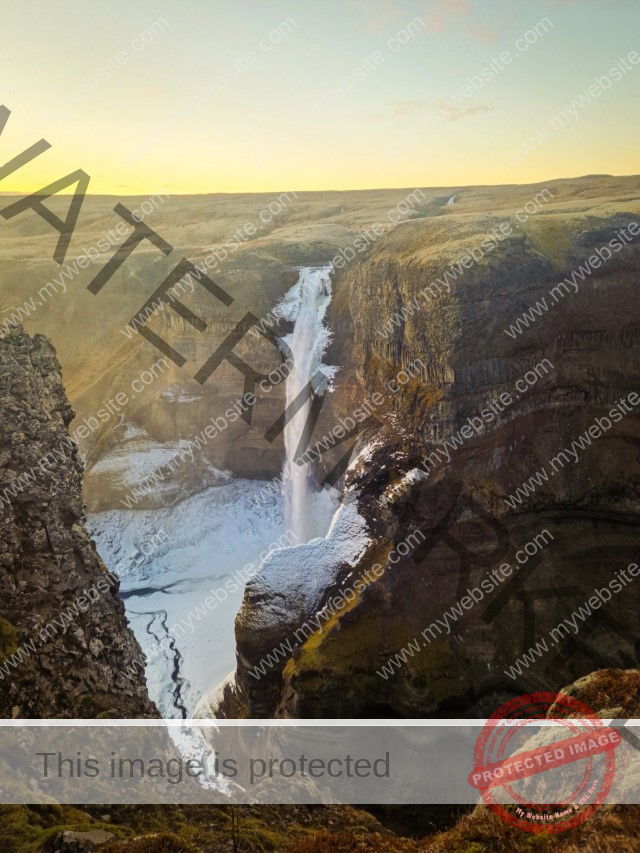
Waterfall is beautiful in every season
Upon arrival, you’ll be captivated by the dramatic scenery, where the Fossa River plunges into a deep gorge, surrounded by sheer rock walls and wild landscapes. During the summer, you’ll encounter a variety of colours, from the dark green of the vegetation to the black of the lava rocks, giving Haifoss an almost mystical feel.
In winter, the waterfall has a completely different atmosphere – white snow blankets contrast with the dark rocks and the waterfall partially freezes. Covered with snow, the water has to make its own way.
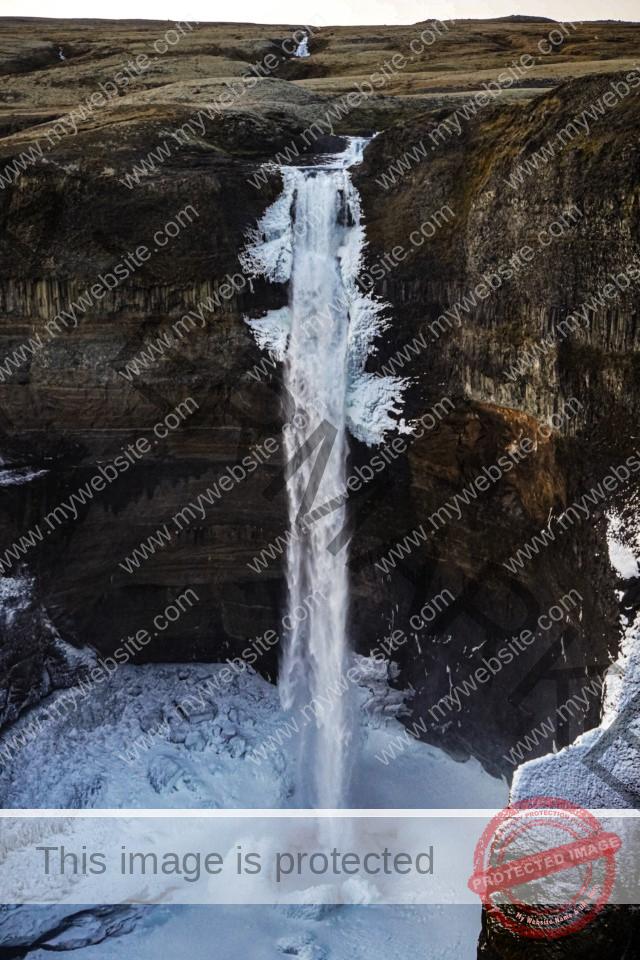
Haifoss is not just a photo stop – it’s an experience where you feel the power and beauty of the island. Surrounding the landscape is pristine, rugged and full of stories that it only tells to those who are willing to get close and listen.
Waterfall from the upper lookout
Parking is located above the waterfall. After a few minutes of walking more or less on the flat, the different streams of water will show you in all their glory. They will be straight opposite you. Immediately, you will be captivated by the view over Haifoss. You can admire not only this majestic waterfall, but also its “neighbour” the Granni, a smaller waterfall flowing nearby.
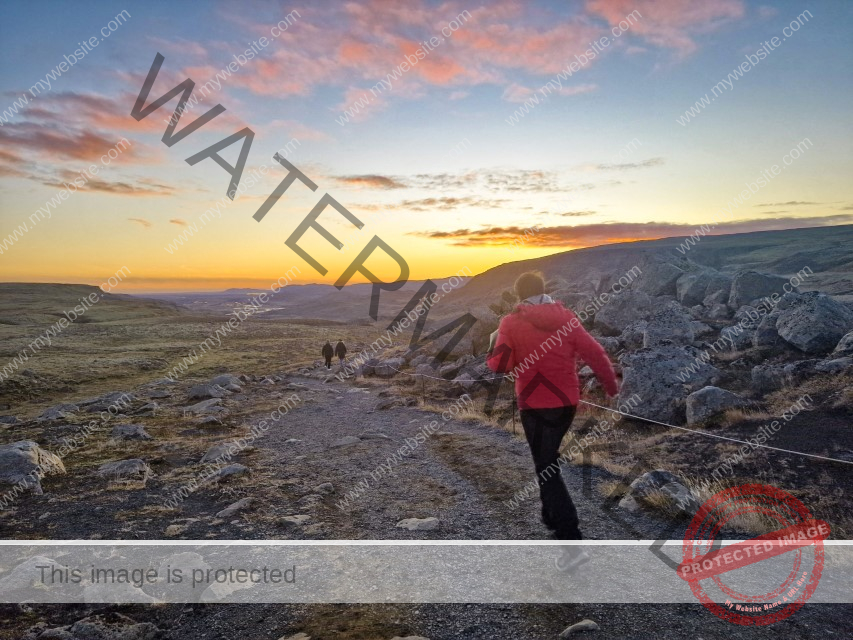
Together they create a symphony of falling water, which disappears with a roar into a deep canyon. Winter transforms Haifoss into a silent, almost frozen world, where the waterfall is partly transformed into ice crystals that turn it into an ice palace in the middle of the wilderness. If it’s a sunny day, the setting sun will play with the colours even more, creating a sight you won’t forget for the rest of your life. But darkness falls quickly and you’re there to see the view change by the minute as the landscape darkens.
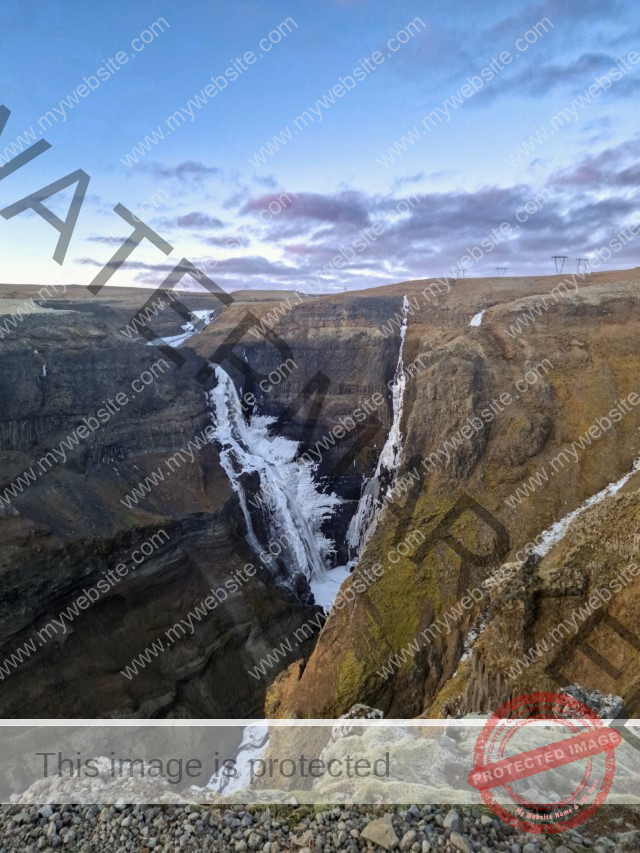
Approach cautiously
If you dare, you can stand on the edge and watch the water hit the frozen pond. But you have to be very careful and approach slowly and near larger rocks that you can catch on if anything goes wrong.
Right between the two waterfalls, there is a large rock near the edge, on which you can sit and watch both waterfalls at the same time. We had the added bonus of the sun gradually hiding behind the hills and illuminating the whole landscape beautifully.
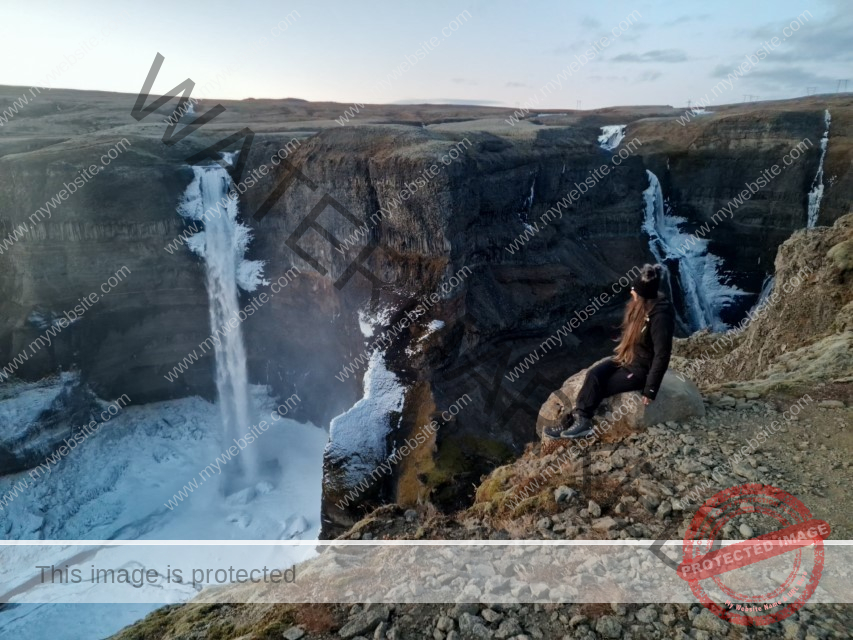
Road down to the waterfalls
Although the viewpoint is the most common destination for hikers, the more adventurous can go all the way down to the base of the waterfall. This route is challenging and not always safe, especially after rains or in winter when the trails are slippery. If you decide to go all the way down, expect it to take about 1.5 hours to get there and back. We were so enthralled that we spent almost an hour at the top lookout and didn’t have time to go down to make it back in daylight.
How to visit Haifoss Waterfall?
It’s roughly a two-hour drive from Reykjavik, making it accessible but remote enough to retain its quiet charm. About an hour and a half’s drive from Gullfoss, this road takes you through a landscape that sets you up for grandiose views.
However, it is not a standard part of packages from local travel agencies offering tours. If you want to visit it, you need a rental car.
Along the way, the path leads through a changing landscape. From Route 32, turn onto Route 332 and continue for approximately 20 minutes on an unpaved road that is uneventful. However, it is better to have a 4X4 in the winter as it can be icy.
There is also the advantage of free parking, which is not customary in Iceland.
